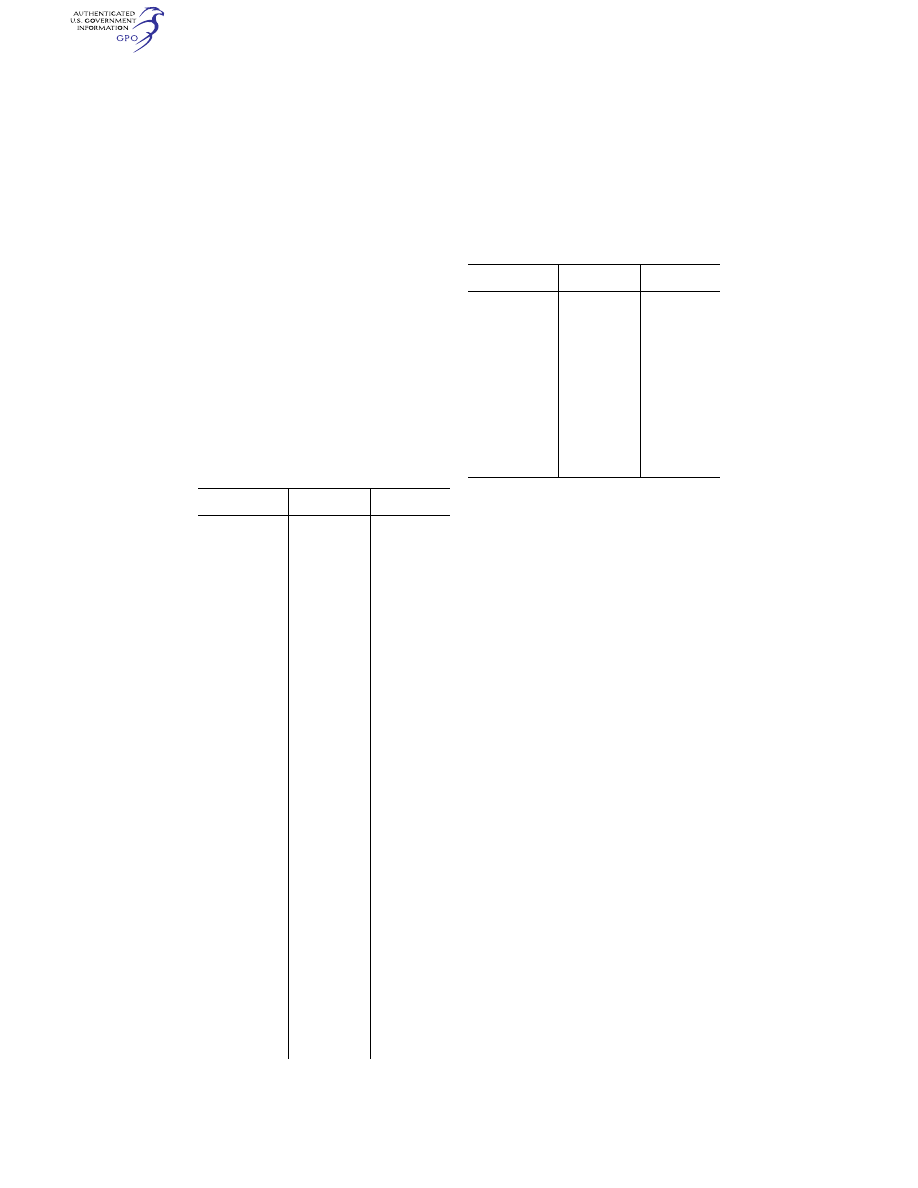
704
14 CFR Ch. I (1–1–24 Edition)
§ 91.155
(b)
Cancellation. When a flight plan
has been activated, the pilot in com-
mand, upon canceling or completing
the flight under the flight plan, shall
notify an FAA Flight Service Station
or ATC facility.
§ 91.155
Basic VFR weather minimums.
(a) Except as provided in paragraph
(b) of this section and § 91.157, no per-
son may operate an aircraft under VFR
when the flight visibility is less, or at
a distance from clouds that is less,
than that prescribed for the cor-
responding altitude and class of air-
space in the following table:
Airspace Flight
visibility
Distance from
clouds
Class A ....................
Not Applicable ....
Not Applicable.
Class B ....................
3 statute miles ....
Clear of Clouds.
Class C ....................
3 statute miles ....
500 feet below.
.............................
1,000 feet above.
.............................
2,000 feet hori-
zontal.
Class D ....................
3 statute miles ....
500 feet below.
.............................
1,000 feet above.
.............................
2,000 feet hori-
zontal.
Class E:
Less than
10,000 feet
MSL.
3 statute miles ....
500 feet below.
.............................
1,000 feet above.
.............................
2,000 feet hori-
zontal.
At or above
10,000 feet
MSL.
5 statute miles ....
1,000 feet below.
.............................
1,000 feet above.
.............................
1 statute mile hor-
izontal.
Class G:
1,200 feet or
less above
the surface
(regardless of
MSL altitude)
For aircraft other
than helicopters:
Day, except as
provided in
§ 91.155(b).
1 statute mile ......
Clear of clouds.
Night, except as
provided in
§ 91.155(b).
3 statute miles ....
500 feet below.
.............................
1,000 feet above.
.............................
2,000 feet hori-
zontal.
For helicopters:
Day ...................
1
⁄
2
statute mile ....
Clear of clouds
Night, except as
provided in
§ 91.155(b).
1 statute mile ......
Clear of clouds.
More than 1,200
feet above the
surface but
less than
10,000 feet
MSL
Day ............
1 statute mile ......
500 feet below.
Airspace Flight
visibility
Distance from
clouds
.............................
1,000 feet above.
.............................
2,000 feet hori-
zontal.
Night ..........
3 statute miles ....
500 feet below.
.............................
1,000 feet above.
.............................
2,000 feet hori-
zontal.
More than 1,200
feet above the
surface and at
or above
10,000 feet
MSL.
5 statute miles ....
1,000 feet below.
.............................
1,000 feet above.
.............................
1 statute mile hor-
izontal.
(b)
Class G Airspace. Notwithstanding
the provisions of paragraph (a) of this
section, the following operations may
be conducted in Class G airspace below
1,200 feet above the surface:
(1)
Helicopter. A helicopter may be op-
erated clear of clouds in an airport
traffic pattern within
1
⁄
2
mile of the
runway or helipad of intended landing
if the flight visibility is not less than
1
⁄
2
statute mile.
(2)
Airplane, powered parachute, or
weight-shift-control aircraft. If the visi-
bility is less than 3 statute miles but
not less than 1 statute mile during
night hours and you are operating in
an airport traffic pattern within
1
⁄
2
mile of the runway, you may operate
an airplane, powered parachute, or
weight-shift-control aircraft clear of
clouds.
(c) Except as provided in § 91.157, no
person may operate an aircraft beneath
the ceiling under VFR within the lat-
eral boundaries of controlled airspace
designated to the surface for an airport
when the ceiling is less than 1,000 feet.
(d) Except as provided in § 91.157 of
this part, no person may take off or
land an aircraft, or enter the traffic
pattern of an airport, under VFR, with-
in the lateral boundaries of the surface
areas of Class B, Class C, Class D, or
Class E airspace designated for an air-
port—
(1) Unless ground visibility at that
airport is at least 3 statute miles; or
(2) If ground visibility is not reported
at that airport, unless flight visibility
during landing or takeoff, or while op-
erating in the traffic pattern is at least
3 statute miles.
VerDate Sep<11>2014
14:00 Mar 14, 2024
Jkt 262047
PO 00000
Frm 00714
Fmt 8010
Sfmt 8010
Q:\14\14V2.TXT
PC31
aworley on LAPBH6H6L3 with DISTILLER
